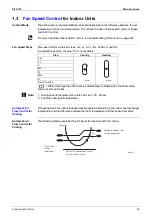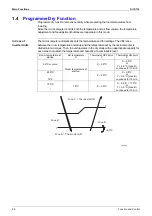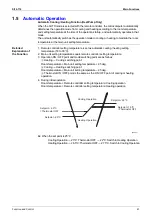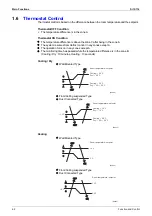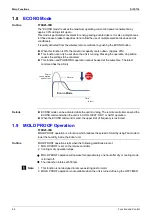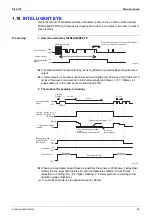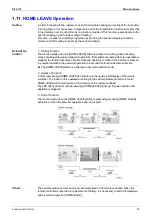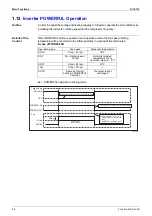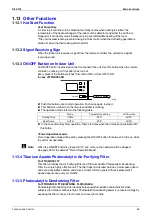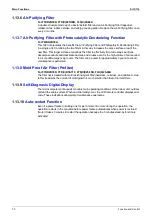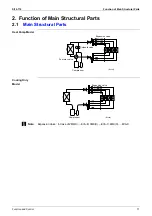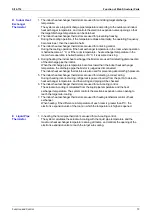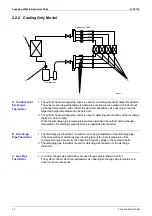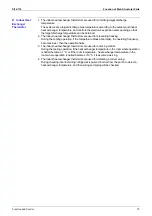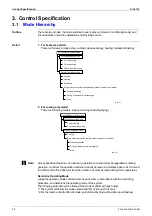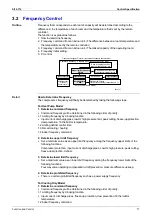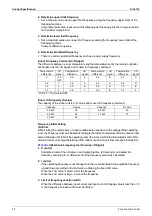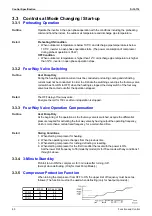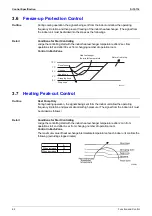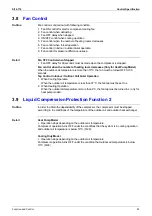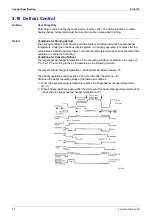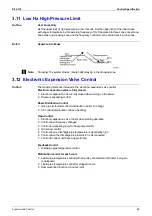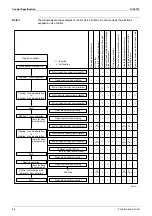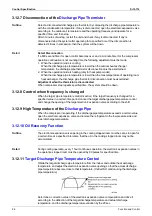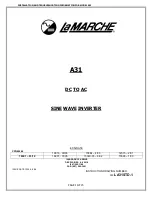
Si12-714
Function of Main Structural Parts
Function and Control
73
D Indoor Heat
Exchanger
Thermistor
1. The indoor heat exchanger thermistors are used for controlling target discharge
temperature.
The system sets a target discharge pipe temperature according to the outdoor and indoor
heat exchanger temperature, and controls the electronic expansion valve opening so that
the target discharge temperature can be obtained.
2. The indoor heat exchanger thermistors are used for preventing freezing.
During the cooling operation, if the temperature drops abnormally, the operating frequency
becomes lower, then the operation halts.
3. The indoor heat exchanger thermistors are used for anti-icing control.
During the cooling operation, if the heat exchanger temperature in the room where operation
is halted becomes -1°C, or if the room temperature - heat exchanger temperature in the
room where operation is halted becomes
≥
10°C, it is assumed as icing.
4. During heating: the indoor heat exchanger thermistors are used for detecting disconnection
of the discharge pipe thermistor.
When the discharge pipe temperature becomes lower than the indoor heat exchanger
temperature, the discharge pipe thermistor is judged as disconnected.
The indoor heat exchanger thermistors are also used for preventing abnormal high pressure.
5. The indoor heat exchanger thermistors are used for detecting incorrect wiring.
During checking incorrect wiring, refrigerant is passed in order from the port A to detect a
heat exchanger temperature, and then wiring and piping will be checked.
6. The indoor heat exchanger thermistors are used for sub-cooling control.
The actual sub-cooling is calculated from the liquid pipe temperature and the heat
exchanger temperature. The system controls the electronic expansion valve opening to
reach the target sub-cooling.
7. The indoor heat exchanger thermistors are used for heating isothermal control of heat
exchanger.
When heating: if the difference in temperature of each room is greater than 8°C, the
electronic expansion valve of the room in which the temperature is higher is opened.
E Liquid Pipe
Thermistor
1. In heating, the liquid pipe thermistors are used for sub-cooling control.
The system calculates the actual sub-cooling with the liquid pipe temperature and the
maximum heat exchanger temperature among all rooms, and controls the opening of the
electronic expansion valve to reach the target sub-cooling.

